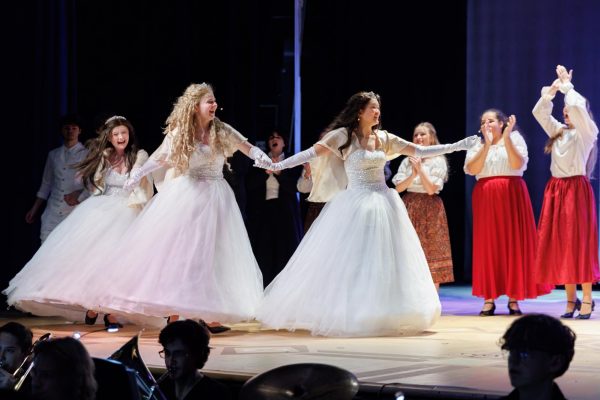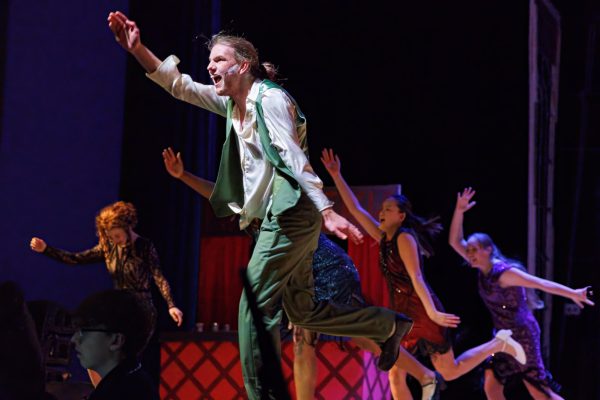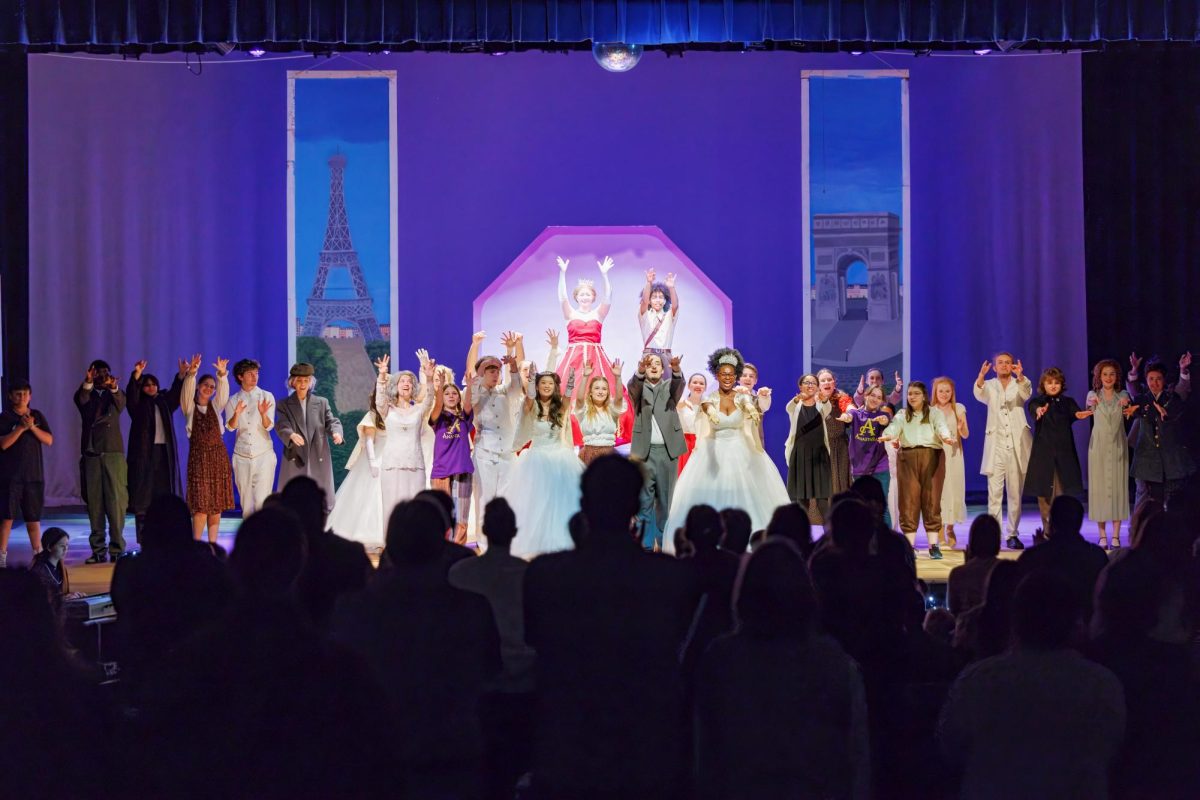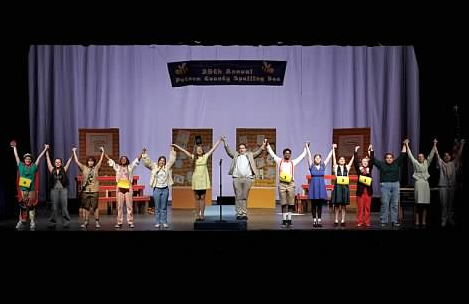July 16, 1918: The curtain of night covers the sky, matching the darkness of this doomed date. A family of seven is led to the belly of a bunker, where their skin will not be kissed by the moonlight again. At least not while they are alive. Rewind and you see this family sitting in the dreary merchant house known as the Ipatiev House in Yekaterinburg, Russia. Once, their residence had been in the Winter Palace. Then, the desire of the Reds of Russia and Vladimir Lenin to dethrone the family exiled the royals from their golden halls. This was a coerced exodus from which they would not return- one that would take them from their dynasty to their death.
The events above chronicle the tragedy of the Romanov family. A horrendous case of murder for the purpose of a communist regime, this piece of Russian history has lit the corners of the world. Yet, who would take it more personally than Russia? After the murders took place, the very hearts of the citizens latched onto hopeful rumors that whispered of life in the midst of the Romanovs’ deaths. Wistfully, they thought that perhaps one of the Romanovs had survived. A family of seven gone so quickly? The royal lineage of Russia distinguished, bringing the end to three hundred years of Romanov rule because of one communist regime? No, they whispered. Anastasia, the youngest of the tsar’s four daughters, must have found a way to escape (HISTORY).
The whisper turned into a song, and the event that lit the corners of the world eventually rebounded into the lights that flooded American theaters. “Anastasia: The Musical”, a performance that follows the princess under the pretense that she escaped her family’s execution but has no memory of who she is, has popularly graced high school theaters. Heritage high school put on the performance last year, and Tuscarora took up the mantle this spring.
With shows these last couple weekends and members of The Pack in the production, Tuscarora’s newspaper is able to explore the musical story through the eyes of those who actually stepped on stage. For both those who weren’t able to see the long-waited production and those who were able to make it, they can experience the musical on another level. A lot goes into making a musical, but the perspective changes depending on the position of the individual: from the sight of the spectators or the eyes of the actors.
From the Sight of the Spectators
Hannah Stine
Devastated. That’s the only word that describes how I felt when I thought I wasn’t going to be able to make it to “Anastasia: The Musical”. While I recently watched the movie and wasn’t fond of it, I was anxious to see Tuscarora’s performance because I heard that the plot wasn’t exactly the same. Also, I was excited to see my friends’ effort towards the play finally pay off (so I might be a little biased). Thankfully, I realized that my schedule aligned with the performance dates. So, on Saturday, April 20, I sank into my seat in the auditorium. After that, the performance that unfolded in front of me is one that I won’t forget.
The musical opened with little Anastasia receiving a music box from her Nana. Since a similar thing happened in the 20th Century Fox movie, I found myself worried that the play would take on more aspects from the movie. However, as the acts played out in front of me, my doubts were twirled away with the silk-skirted dances and the amazing acting. From the opening scenes, which portrayed the Romanovs’ ball getting interrupted as guards set fire to the palace, followed by gunshots that made me physically jump, I was hooked. After that, the musical took some scenes from the movie and improvised others, but captivated me with all of them. Not only did the students perform scenes and songs from the movie well, such as Learn to Do It and Once Upon a December, but they made it so that it was impossible to feel like you weren’t a part of the story folding out in front of you.
Despite my original notion that the songs seemed out of place (when I watched the movie), Tuscarora’s performance of “Anastasia: The Musical” made them fit right in. This was no easy task since the actors had to maintain a Russian accent the entire play. As someone with nonexistent vocal talent (and frankly, no sense for accents), I was astounded with how the performers pulled the songs off well and maintained an accent throughout the entire show. In part, this had to do with the amazing actors, who put all their effort in and were rewarded by practically becoming their characters on stage. The cast was stacked with seasoned singers and hard-working actors, with Ava Peach as Anastasia, Queen Kincaide as Dimitri, James Mangovski as Vlad, Rachael Giessman as the Dowager Empress, Jae Parvin as Countess Lily, and Maggie Larson as Gleb.
In order for a musical to be successful, everyone has to be in tandem. It was clear that the ensemble and side actors had transformed into their characters too, however small their role was in the play. I saw this specifically through the dances and harmonized songs. With no noticeable left feet during the musical, the large-cast dances exhibited a synchronous effect that can only be won through months of practice and hard-earned dedication to not only the choreography, but the entire performance itself. This was heard throughout the music as well, specifically Once Upon a December, which was the main song of the play. Utilizing a wide range of vocals, this piece soared above the crowd and tied the plot together in a nice silver bow. Accompanying the singers was the pit orchestra, who played their pieces to perfection and made the performance what it was: a musical!
Another highlight of “Anastasia: The Musical” was the act of “Swan Lake” (another- wait for it- Russian play) that was built into the plot of the story. A play within a play- how cool is that? The students who were in that part of the musical performed it as if it were the sole musical itself, stealing the stage in a ballerina fashion and adding historical Russian heritage to “Anastasia: The Musical”. It was fun to be able to see everyone’s talent through the actual performance and the built in play!
However, none of this would have been complete without the sets, which were modest in a way that met the standards. As an artistic person, I appreciated the large painted panels representing famous landmarks in Russia and Paris (one of them being the Eiffel Tower) that switched depending on the location the scene was in. Other pieces of the set included large clear panels as windows, a large music box used for a raised platform, and a poster depicting a hand holding the fiery torch of communism that was put up every time the villain of the story (a Russian soldier named Gleb) had a main scene.
Towards the beginning of the play I was wondering how the actors were able to play their characters so well, with all the extra things that they had to keep in mind during the performance. By the intermission, my friend Jenna Gould had shared with me that she hadn’t realized the students were so good at singing, and I agreed. “Anastasia: The Musical” was an eye opening musical that Gould summed up as, “…an amazing musical and the cast was really talented.” Others that I talked to about the play made similar comments, having been blown away by the performance. However, there’s no way that we can understand the scope of the musical unless we take a look behind the scenes, specifically through the eyes of the actors.
From the Eyes of the Actors
Sydney Nicklas
The bell rings, and I’m off. I hurry to the Fine Arts hallway and begin putting on my stage makeup: foundation, blush, mascara, lipstick, the whole shabang. I chat with my friends as I tie my hair into braids and shove it into a wig cap. Walking around bald while I put my elaborate costume on is something I have gotten used to. After being laced into my white ball gown, I put on my wig, report to the mic table, put my mic on, and head over to the stage for mic checks. Everyone scurries to get ready before it’s time for vocal and accent warmups.
Approximately half an hour before opening, my fellow Choral Directors and I lead a series of vocal warm ups to prepare the cast for the night of singing ahead of them. Before the curtains open, we do a show circle, where a senior stands in the middle and leads us in the iconic chant: “This will be our best show yet!” Now we are ready to perform.
As Tatiana Romanov, my first scene is “Last Dance of the Romanovs,” where I, along with the rest of the actors portraying this iconic family, waltz around the large music box set. This is one of my favorite scenes, not only because of the dancing and singing but because it is the scene of my demise (my first death, not to be confused with my second death in Act II). The lights turn red and the sound of an explosion rings in my ears, signaling the arrival of danger. This is one of my favorite acting moments in the show because I get to portray very intense emotions. Despite my untimely death in this part of the show, I reappear both as other characters and as the ghost of Tatiana Romanov that remained grounded to the real world, tethered to her living sister.
Between scenes, I wait backstage and make funny faces at my friends because we have to be silent. When my castmates come off stage after a number, I often hug them in celebration of a scene well done, which always brings a smile to my face. Sometimes I need to do a quick change, like when I quickly switch from Tatiana Romanov to a train passenger in the songs “Stay, I Pray You” and “We’ll Go From There.” “Stay, I Pray You” is a heartbreaking song about leaving your homeland that you love so dearly for a better life. The lyrics struck a chord for me, making me think about my senior friends who would be graduating soon. As I sang, “let me have a moment…let me say goodbye…” I struggled to hold back my real tears. I channeled my grief to put on the best performance that I could and show that I was truly saddened to leave Russia.
The rest of the show goes by in a blur, and before I know it, we are running on stage to take our final bow. I am filled with pride as I look out into the audience and hear their applause. On closing night, we highlighted our seniors, giving them a rose for each year that they were involved in our department. As Mr. Daniel recognized more and more of my best friends, the reality set in that I would spend my last year at Tuscarora without them. My eyes filled with tears, but I am happy that they get to go off and explore their passions. After the ceremony, I left the stage, feeling bittersweet because the musical that meant so much to me is over.
For me, the best thing about being a part of a show like this is the people you connect with. You spend hours upon hours with a group of people, and rather than growing sick of them, you form lifelong friendships. “Anastasia: The Musical” in particular has been the tightest-knit cast I’ve ever been a part of. There is not a single member of our cast that I didn’t bond with or form a positive memory with. I will always love “Anastasia: The Musical” because of the family it gave me.
Luke Pierce
Dec 5th, 2024: the day the cast list of Tuscarora’s Performing Arts p roduction of “Anastasia: The Musical” was announced. I’m casted as a variety of characters including a dancer and Tsar Nicholas II. We begin rehearsals immediately and the process of creating a memorable production of Anastasia is in the works. Daily rehearsals were at eight in the morning and six at night, meaning we started off at dawn and finished at dusk in order to bring perfection to the next rehearsal. Eventually, all my hard work offered me more opportunities and I was given the opportunity to work as Joelle Aheto’s assistant choreographer. Our new choreography team completely recreated the show into a version that was built to leave the audiences with many memorable moments.
roduction of “Anastasia: The Musical” was announced. I’m casted as a variety of characters including a dancer and Tsar Nicholas II. We begin rehearsals immediately and the process of creating a memorable production of Anastasia is in the works. Daily rehearsals were at eight in the morning and six at night, meaning we started off at dawn and finished at dusk in order to bring perfection to the next rehearsal. Eventually, all my hard work offered me more opportunities and I was given the opportunity to work as Joelle Aheto’s assistant choreographer. Our new choreography team completely recreated the show into a version that was built to leave the audiences with many memorable moments.
Losing sleep every night to guarantee excellent choreography might’ve been a stressful experience, but it was one of the most rewarding experiences I’ve ever had. It took my dance skills to the next level and allowed me to write my own musical theater dance break for Land of Yesterday. From hooting and hollering to a sudden tap sequence, it was one of the most fulfilling performances I’ve given to date. Another truly groundbreaking choreographed sequence I got to perform in was the death lift during Quartet at the Ballet. The first time I’ve ever done an overhead lift leaving audience members gasping in awe. It truly was one of the most beautiful performances I’ve given and I will forever be grateful to my dance partners Kate Anderson and Joelle Aheto, plus our swan ensemble Sydney Nicklas, Elena Brunton, and Alyce Snead.
Another reason I have held our production of Anastasia so near and dear to my heart is the friends I made along the way. I will forever be in debt for the support my best friend, Sydney Nicklas, provided me throughout the whole process. She kept me motivated to work hard and just hope for the best results in my choreography. I’m also forever grateful to the people I’ve met in the show, Joelle Aheto, Jae Parvin, Dylan Bostian, Ava Lewis, Maggie Larson, and James Mangovski. They are now some of my closest friends and people I cherish. “Anastasia: The Musical” was truly a journey to the past and present for me, reuniting me with my childhood film and allowing me to realign with my love for theater.






